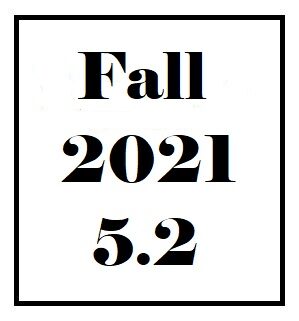artifact: a comic essay about a revision of a revision assessment rubric for student writing
Karah Parks, San Francisco State University
Abstract
Many scholars have examined the ecosystem of the writing process in pursuit of more effective composition pedagogies over the past forty years. Of current interest are ways of applying community-centered, participatory approaches to the assessment and revision stages of writing as a non-linear process, uniquely traversed by each individual within a larger discourse community. Several recent studies have demonstrated that this kind of approach to revision and assessment increases students’ confidence as writers and their value for revision in particular as a discrete part of the writing process. However, despite these findings both past and present, revision continues to be taught as an afterthought at the end of the writing process, and many students lack confidence to both produce and engage meaningful feedback that leads to better revision work, and, eventually, better writing. The content of this comic essay is a metacognitive journey about my revising of an assessment rubric of revision work performed in an advanced writing course for English speakers of other languages (ESOL) at the community college level. It reviews and integrates what scholarship has taught us about revision and assessment starting with foundational writing process theories and ending in their relationship to current social justice pedagogies in composition courses that seek to empower students by involving them in the assessment cycle. Along the way, I reflect on ways I have practically applied these theories in my own classroom, and in the process, share what was learned, reinforcing what the literature up to now has stated: allowing more time and space to teach and practice revision, providing regular assessment of feedback throughout the writing process, and designing assessment in collaboration with students to assess revision, can enrich students’ value for revision and confidence as writers.
Note: When reading via cellphone, please use landscape mode to avoid distortion.
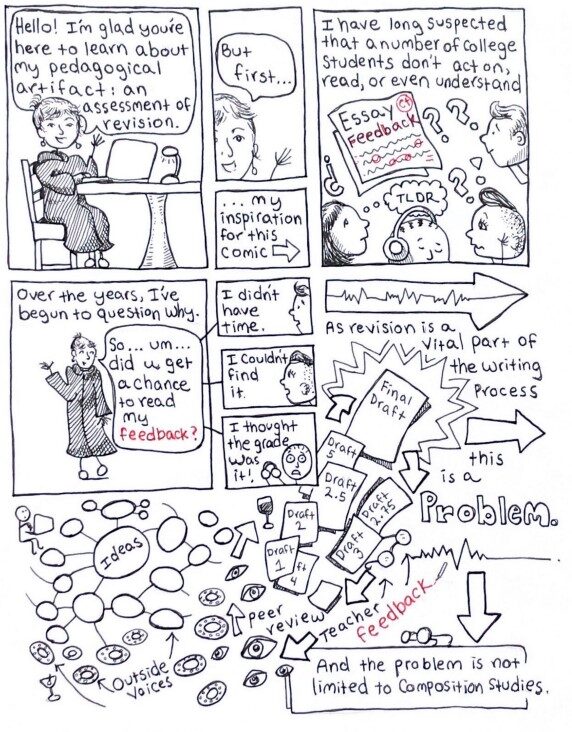 |
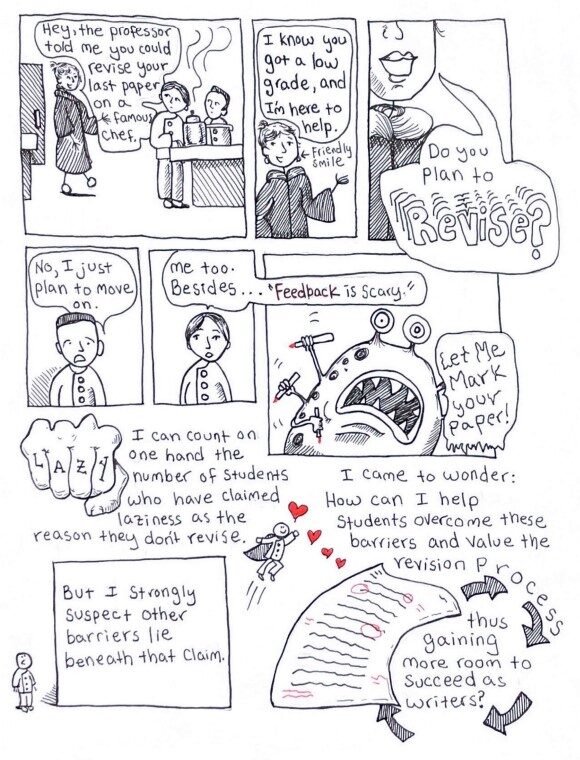 |
 |
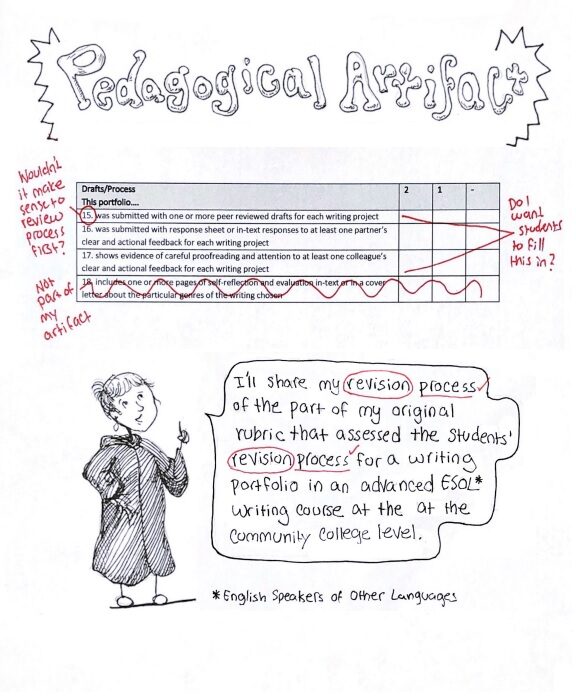 |
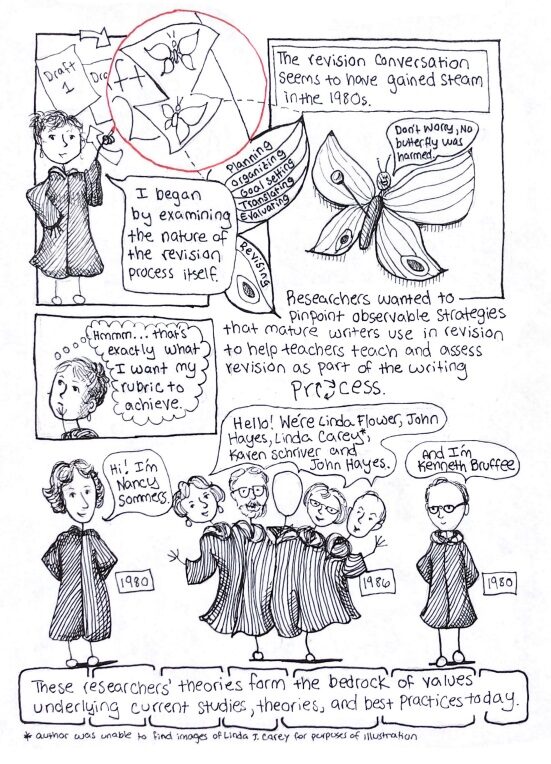 |
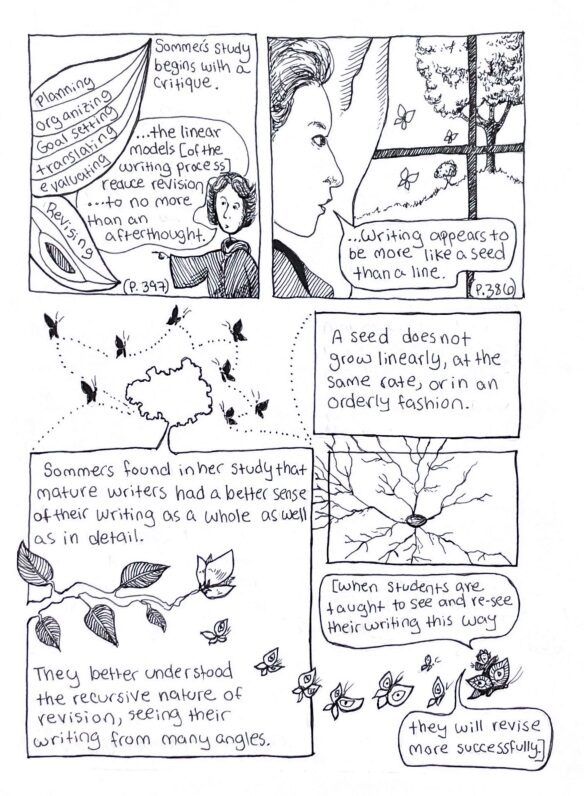 |
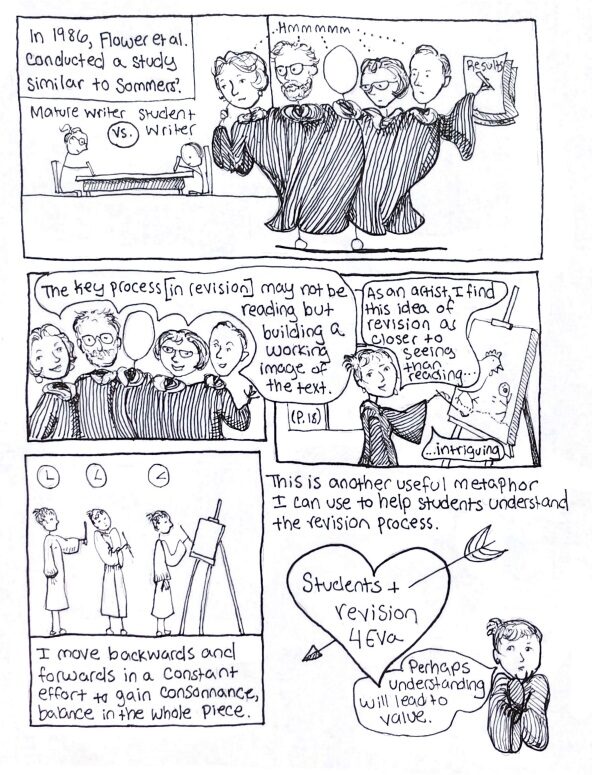 |
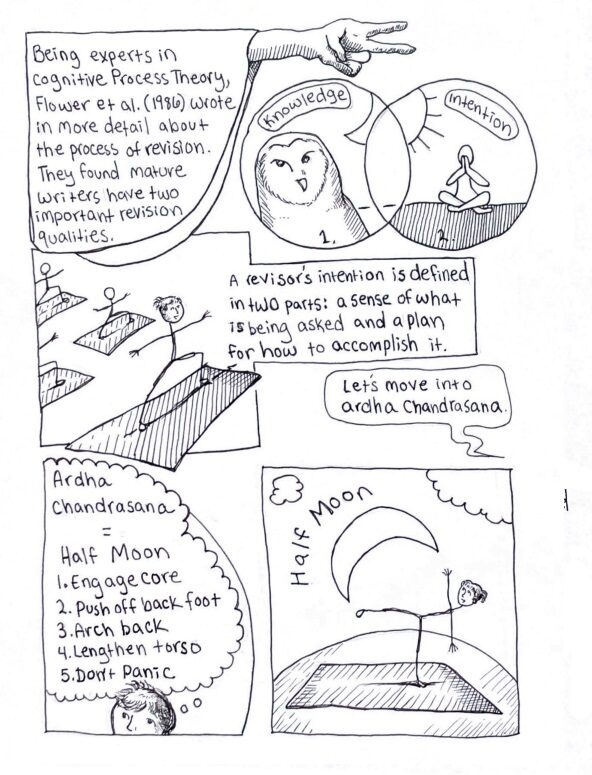 |
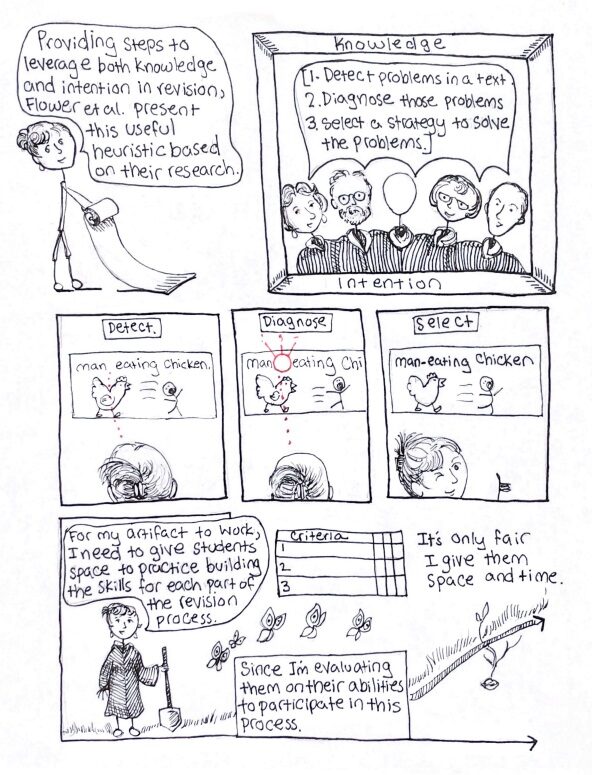 |
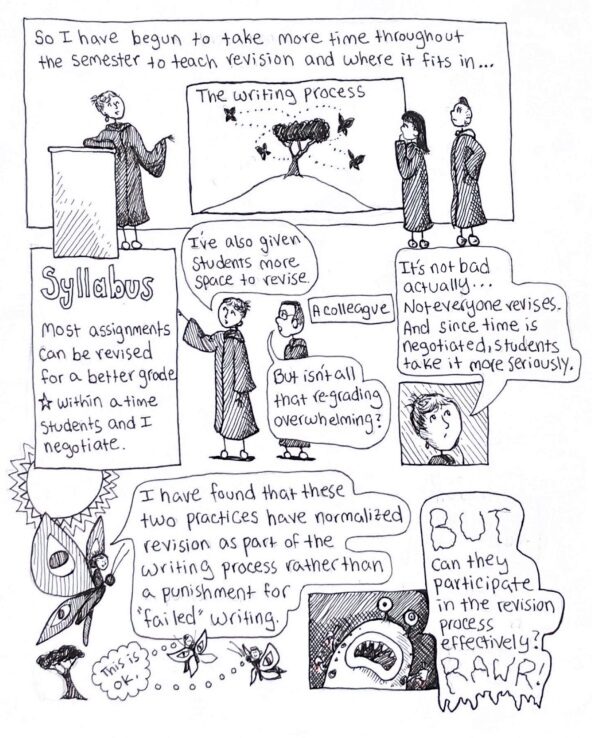 |
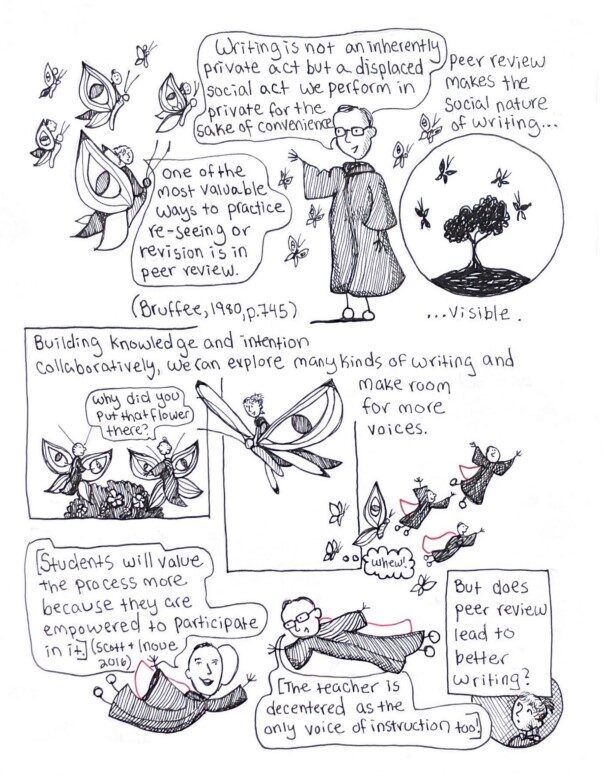 |
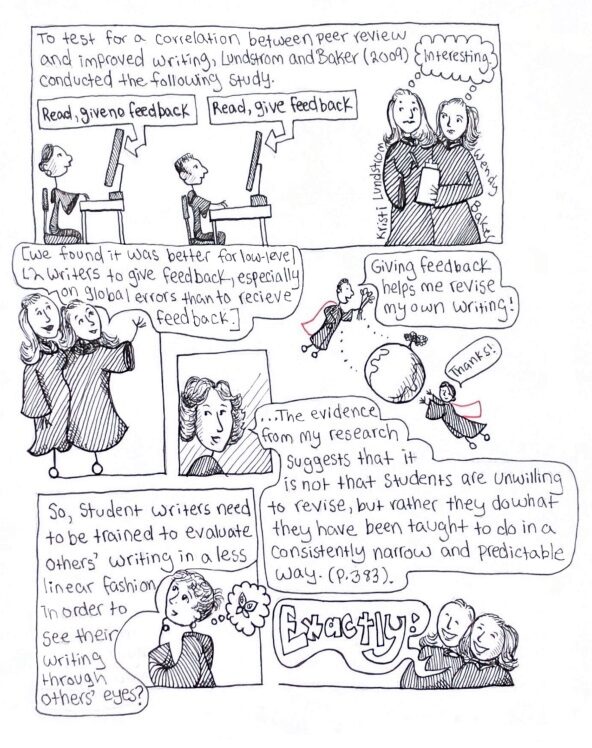 |
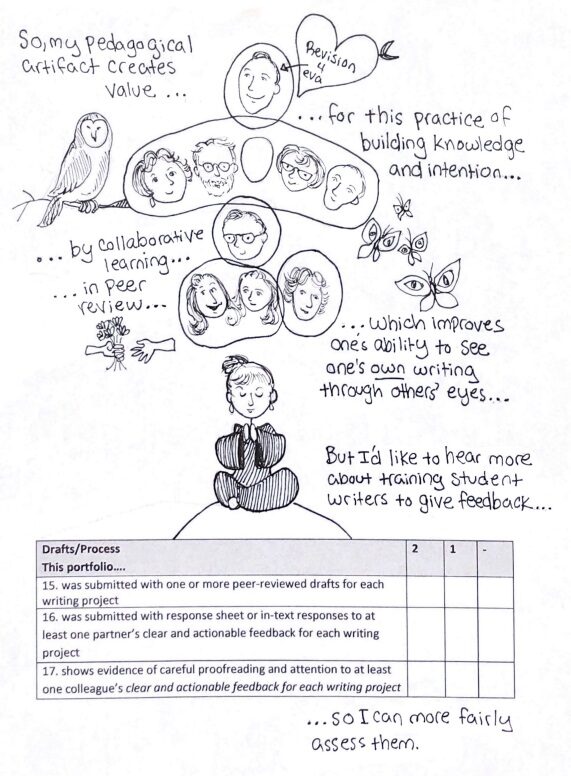 |
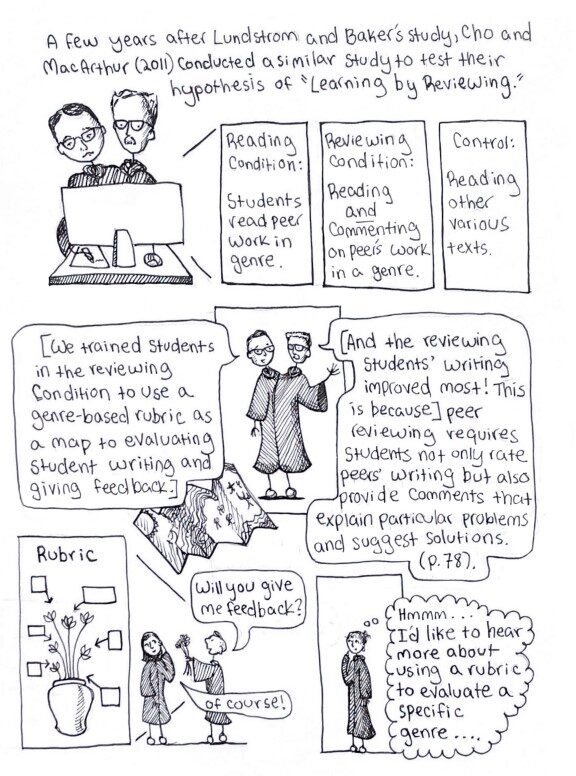 |
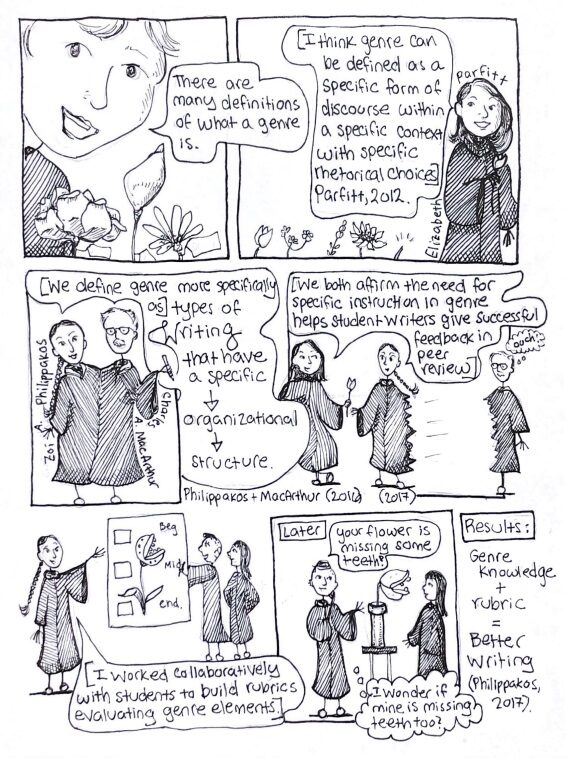 |
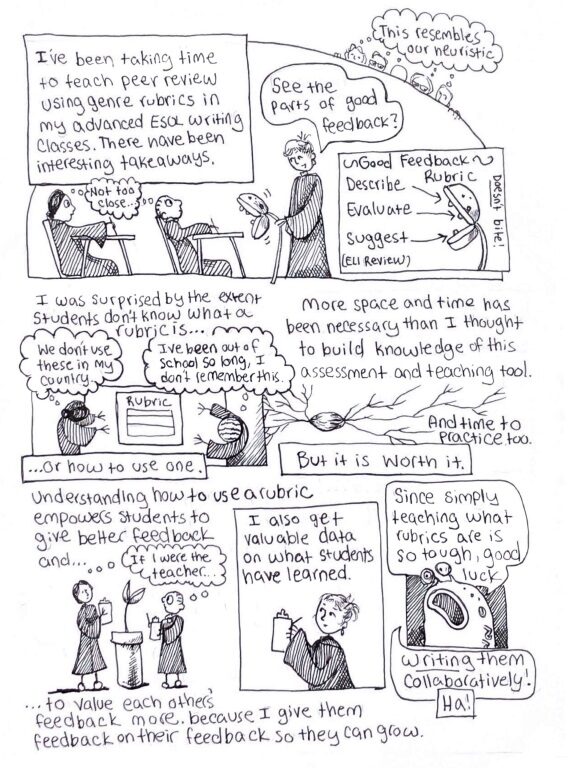 |
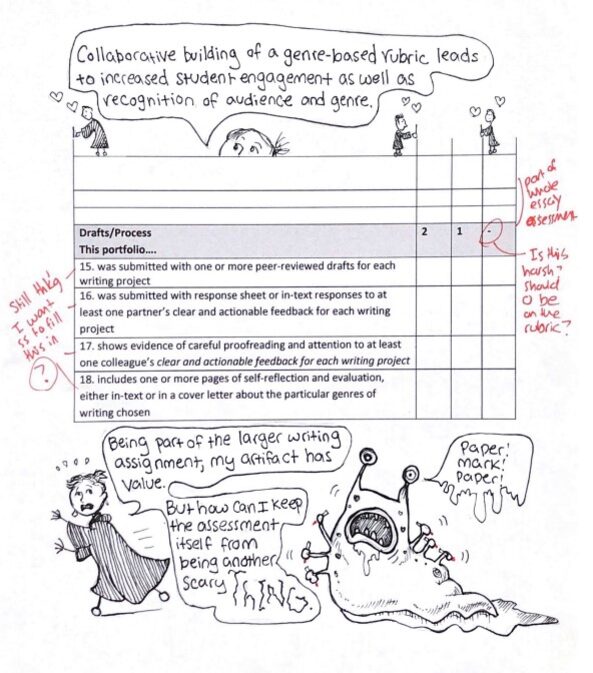 |
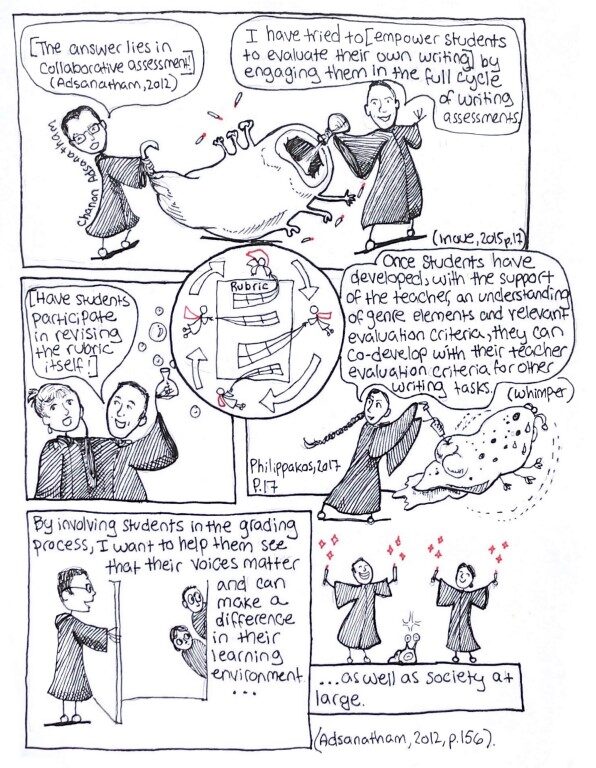 |
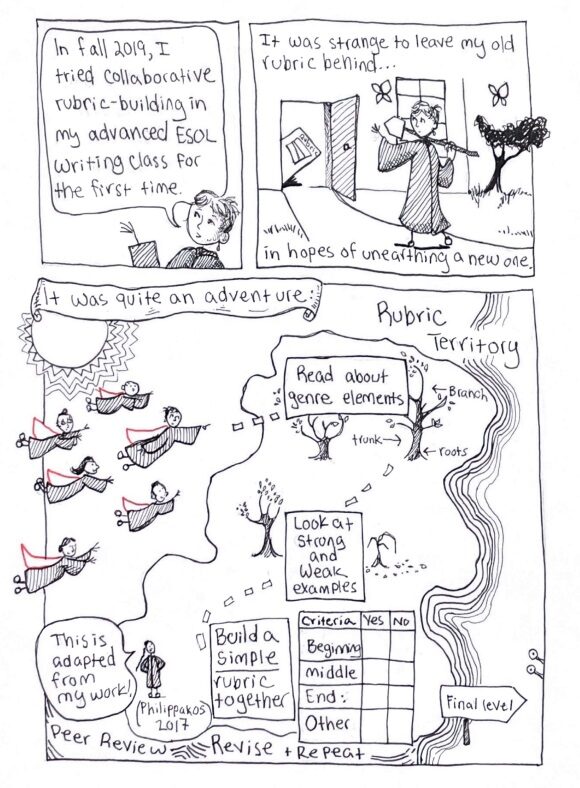 |
 |
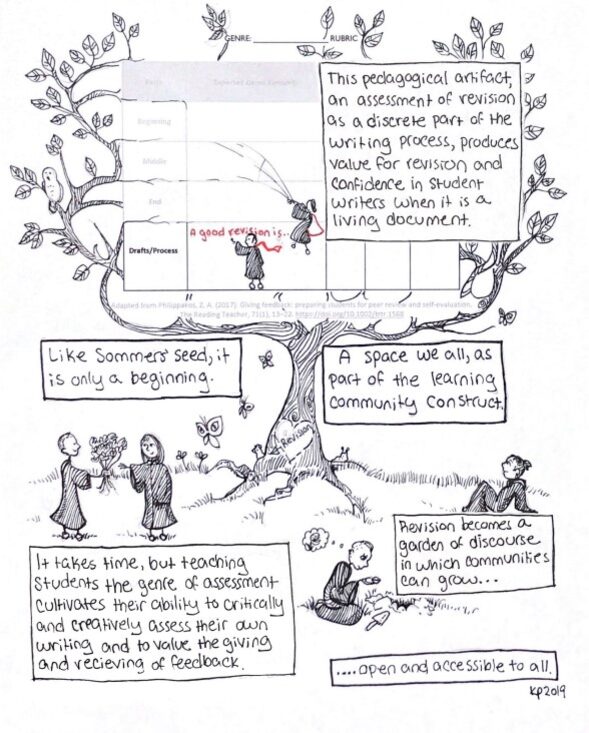 |
Acknowledgements
It has been a liberating experience to find my voice in comics, and I would like to gratefully acknowledge those who have supported the development of this particular comic: Rich Shivener for such useful critical and encouraging feedback on my first draft, and Franny Howes, most especially for commenting on the connection I was hoping would be clear between the linework left visible below the ink and topic of the piece. Finally, to Bridget Gelms, who has supported me the entire journey and whose own pedagogical approach to teaching multimodality in the writing process at last gave me the room I needed to begin this comic in the first place.
References
Adsanatham, C. (2012). Integrating assessment and instruction: using student-generated grading criteria to evaluate multimodal digital projects. Computers and Composition, 29(2), 152–174. https://doi.org/10.1016/j.compcom.2012.04.002
Bruffee, K. (1981). Collaborative learning. College English, 43(7), 745–747.
Cho, K., & MacArthur, C. (2011). Learning by reviewing. Journal of Educational Psychology, 103(1), 73–84. https://doi.org/10.1037/a0021950
Eli Review. (n.d.). Feedback and revision: The key components of powerful writing pedagogy. Retrieved from http://elireview.com/content/td/feedback/
Flower, L., Hayes, J. R., Carey, L., Schriver, K., & Stratman, J. (1986). Detection, diagnosis, and the strategies of revision. College Composition and Communication, 37(1), 16. https://doi.org/10.2307/357381
Inoue, A. B. (2015). Antiracist writing assessment ecologies: teaching and assessing writing for a socially just future. The WAC Clearinghouse; Parlor Press.
Lundstrom, K., & Baker, W. (2009). To give is better than to receive: The benefits of peer review to the reviewer’s own writing. Journal of Second Language Writing, 18(1), 30–43. https://doi.org/10.1016/j.jslw.2008.06.002
Parfitt, E. (2012). Establishing the genre of peer review to create new rhetorical knowledge. Compendium2, 5(1), 1–8.
Philippakos, Z. A. (2017). Giving feedback: preparing students for peer review and self-evaluation. The Reading Teacher, 71(1), 13–22. https://doi.org/10.1002/trtr.1568
Philippakos, Z. A., & MacArthur, C. A. (2016). The use of genre-specific evaluation criteria for revision. The Language and Literacy Spectrum, 26, 41–52.
Scott, T., & Inoue, A. B. (2015). Assessing writing shapes contexts and instruction. In L. Adler-Kassner & E. A. Wardle (Eds.). Naming what we know: threshold concepts of writing studies (Classroom ed., pp. 29-30). Utah State University Press.
Sommers, N. (1980). Revision strategies of student writers and experienced adult writers. College Composition and Communication, 31(4), 378–388. https://doi.org/10.2307/356588
